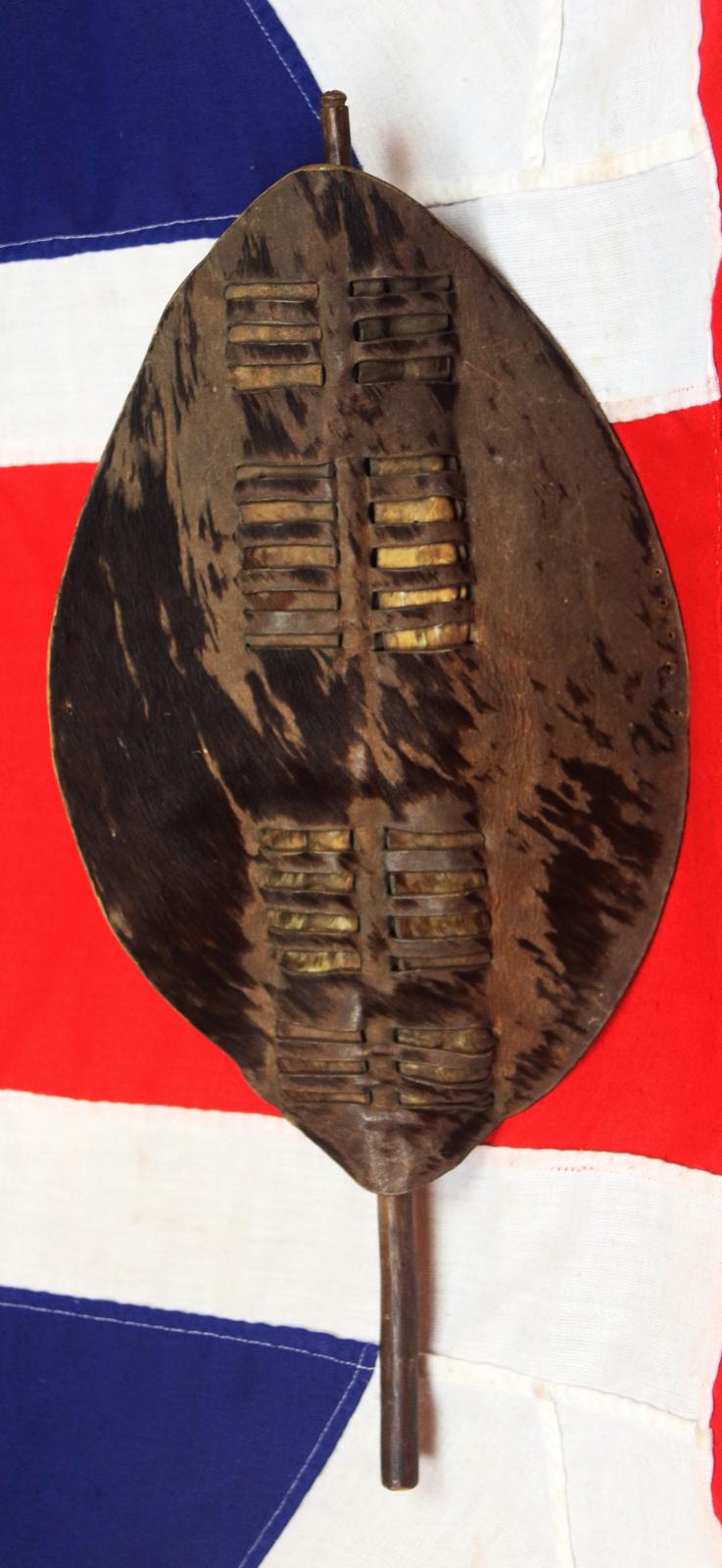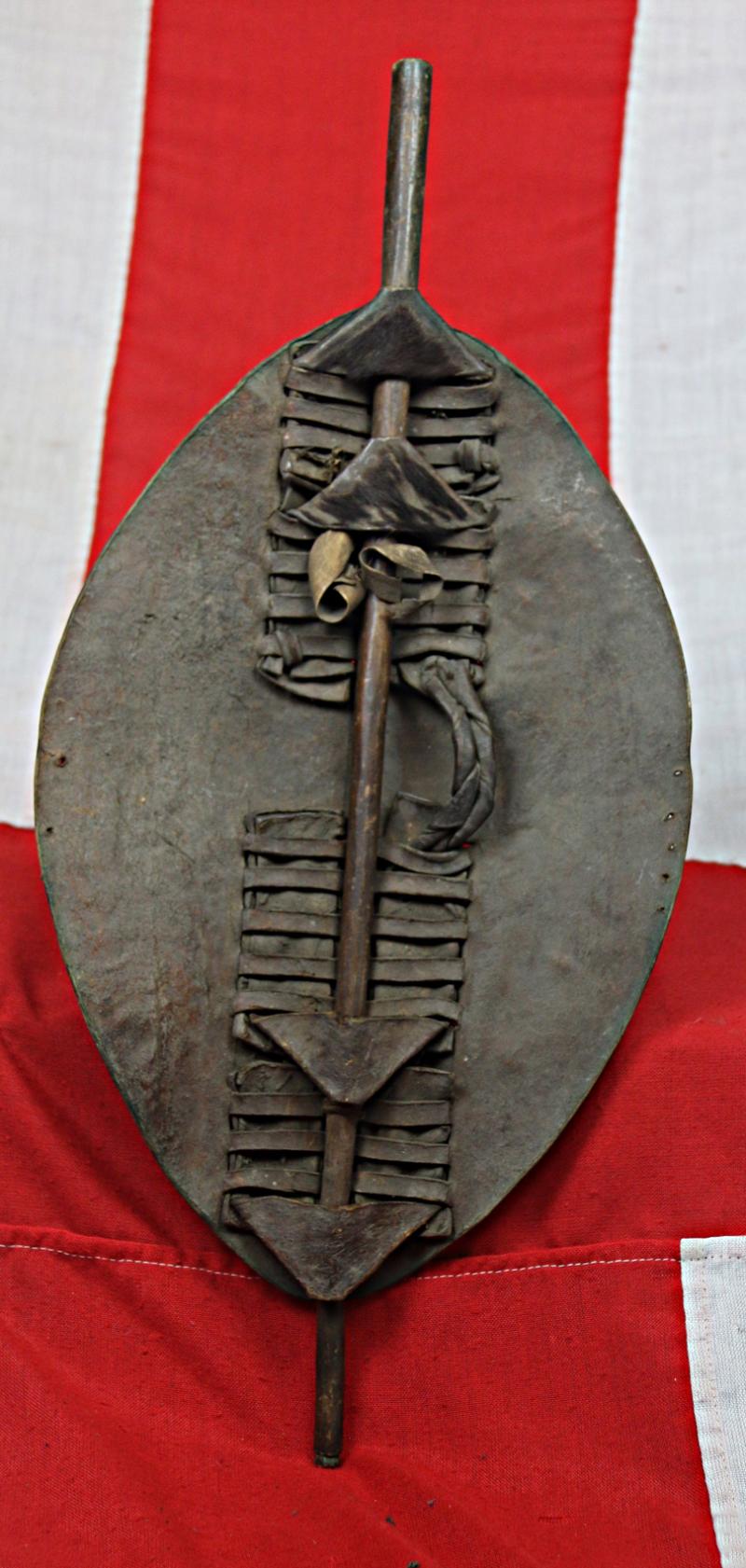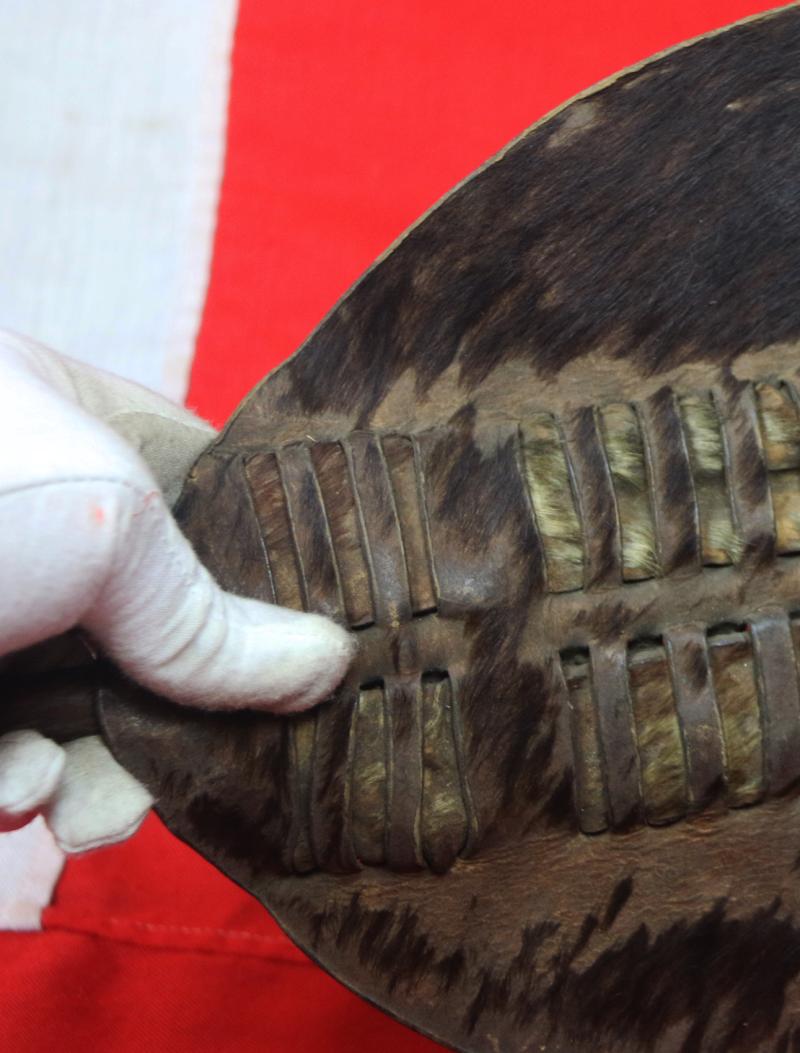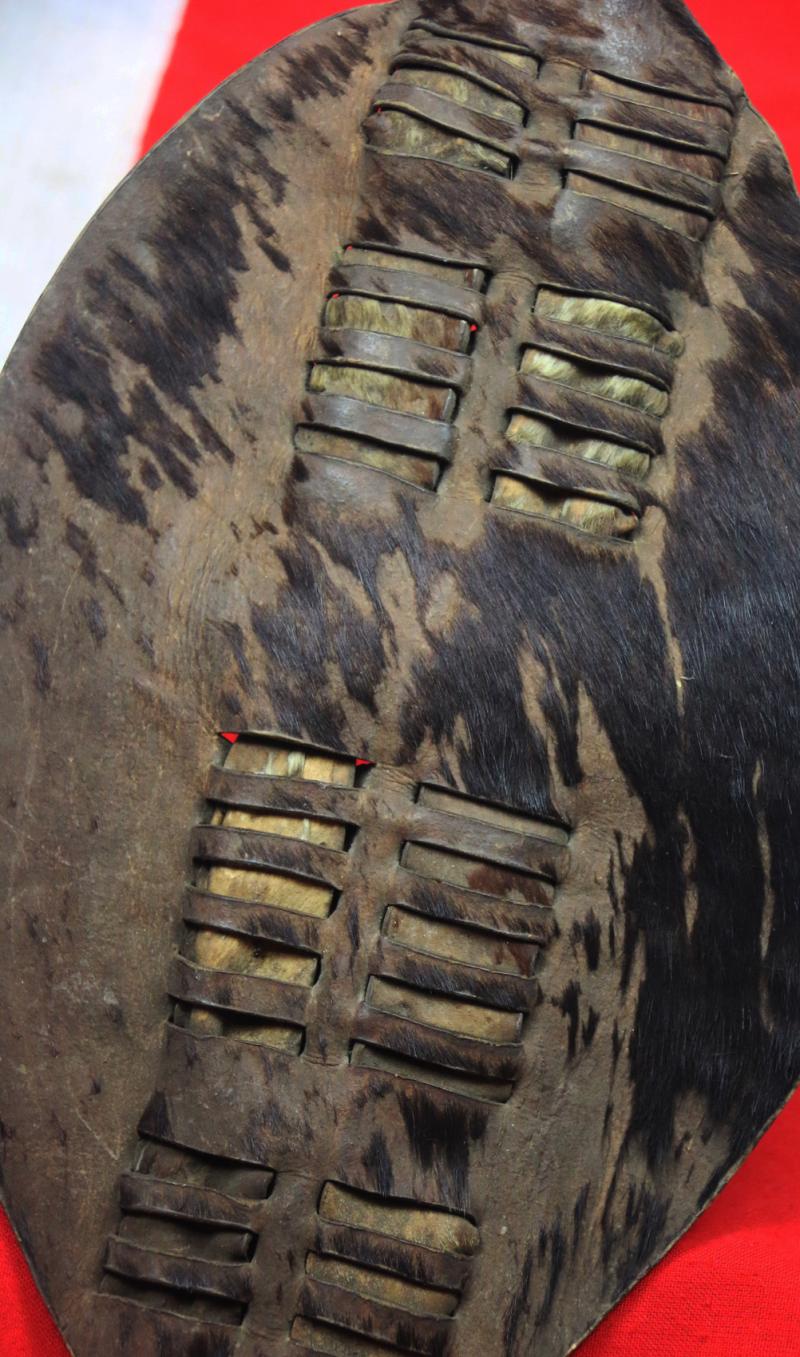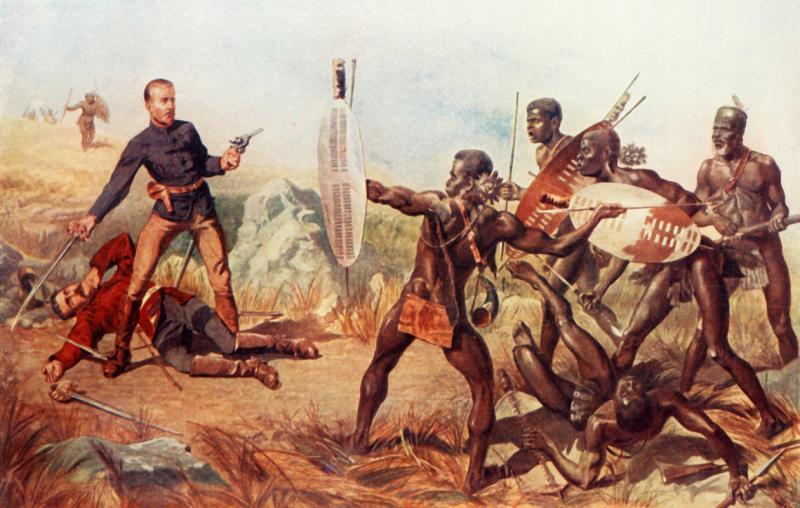A Superb, Original, 1879 Zulu War Small Cow-Hide Zulu Shield. Likely A Zulu Iwahu Shield. From the Time Of Islandwana, Rorke's Drift and Ulundi. Souvenir of the Zulu War
The ideal size for a historical display today, of a private collector or museum, such as combined with original Zulu War pieces, such as spears & knopkerrie {war clubs}.
Small cow-hide shields such as this were developed into larger versions, known as Isihlangu, in the early 19th century by Shaka kaSenzangakhona, a great warrior king and innovator who transformed Zulu warriors into a potent military machine. Shaka also introduced a new short, stabbing spear and a new style of fighting whereby the Zulu could barge his enemy off balance with the shield, or use it to hook around hid enemy's shield, pull it across his body and stab him under the left arm. These new weapons and methods, combined with tactical brilliance on the battlefield allowed the Zulu to conquer their neighbours, consolidate economic and military power, and resist European invasion for a long period.
The Zulu military system was based on the close bonding of unmarried men grouped by age. Brought together in a barracks at about 18-20 years old, a group of 350-400 men developed a strong identity as a 'regiment' or impi thanks to insignia such as the patterning on their shields. Each impi had its own kraal of cattle, and King Shaka assigned each a specific hide patterning. Impi kept their shields turned face-inwards under their arms while charging the enemy, until the last moment when the entire regiment turned their shields to face the enemy - who would only realise which of Shaka's regiments they faced with seconds to spare. This idea that the shield represented one's military identity is enshrined in the Zulu expression, "to be under somebody's shield", meaning to be under their protection.
Yet the different colours and markings on shields did more than just identify a specific impi. Great warriors had white shields with one or two spots, the young and inexperienced had black shields whilst the middle warriors had red shields. This demarcation formed the basis of the Zulu's famous battle formation imitating the horns, chest and loins of a cow, which is thought to have originated in hunting as a means of encircling game. During combat, the youngest and swiftest warriors, carrying dark shields, made up the 'horns', attempting to surround the enemy and draw him into the 'chest', whereupon the elite white shields would destroy him.
After a year of basic training, young warriors were sent home to tend their family cattle herds, mobilising for active service for four months of each year thereafter. Impi were disbanded when the men reached their late thirties and, under Shaka, it was only then they could marry. However, by the time of Zulu War of 1879, in the reign of Cetewayo, the marriage age was much younger and married warriors were no longer regarded as inferior and could bear a white shield in battle. Whether a Zulu warrior was active or retired, his shield remained an important symbol of his status upon entering marriage.
The Zulus, 22,000 strong, attacked the camp at Isandlwana and their sheer numbers overwhelmed the British. As the officers paced their men far too far apart to face the coming onslaught. During the battle Lieutenant-Colonel Pulleine ordered Lieutenants Coghill and Melvill to save the Queen's Colour—the Regimental Colour was located at Helpmakaar with G Company. The two Lieutenants attempted to escape by crossing the Buffalo River where the Colour fell and was lost downstream, later being recovered. Both officers were killed. At this time the Victoria Cross (VC) was not awarded posthumously. This changed in the early 1900s when both Lieutenants were awarded posthumous Victoria Crosses for their bravery. The 2nd Battalion lost both its Colours at Isandhlwana though parts of the Colours—the crown, the pike and a colour case—were retrieved and trooped when the battalion was presented with new Colours in 1880.
The 24th had performed with distinction during the battle. The last survivors made their way to the foot of a mountain where they fought until they expended all their ammunition and were killed. The 24th Foot suffered 540 dead, including the 1st Battalion's commanding officer.
After the battle, some 4,000 to 5,000 Zulus headed for Rorke's Drift, a small missionary post garrisoned by a company of the 2/24th Foot, native levies and others under the command of Lieutenant Chard, Royal Engineers, the most senior officer of the 24th present being Lieutenant Gonville Bromhead. Two Boer cavalry officers, Lieutenants Adendorff and Vane, arrived to inform the garrison of the defeat at Isandhlwana. The Acting Assistant Commissary James Langley Dalton persuaded Bromhead and Chard to stay and the small garrison frantically prepared rudimentary fortifications.
The Zulus first attacked at 4:30 pm. Throughout the day the garrison was attacked from all sides, including rifle fire from the heights above the garrison, and bitter hand-to-hand fighting often ensued. At one point the Zulus entered the hospital, which was stoutly defended by the wounded inside until it was set alight and eventually burnt down. The battle raged on into the early hours of 23 January but by dawn the Zulu Army had withdrawn. Lord Chelmsford and a column of British troops arrived soon afterwards. The garrison had suffered 15 killed during the battle (two died later) and 11 defenders were awarded the Victoria Cross for their distinguished defense of the post, 7 going to soldiers of the 24th Foot.
54cm long inc haft
Code: 25535
1050.00 GBP


